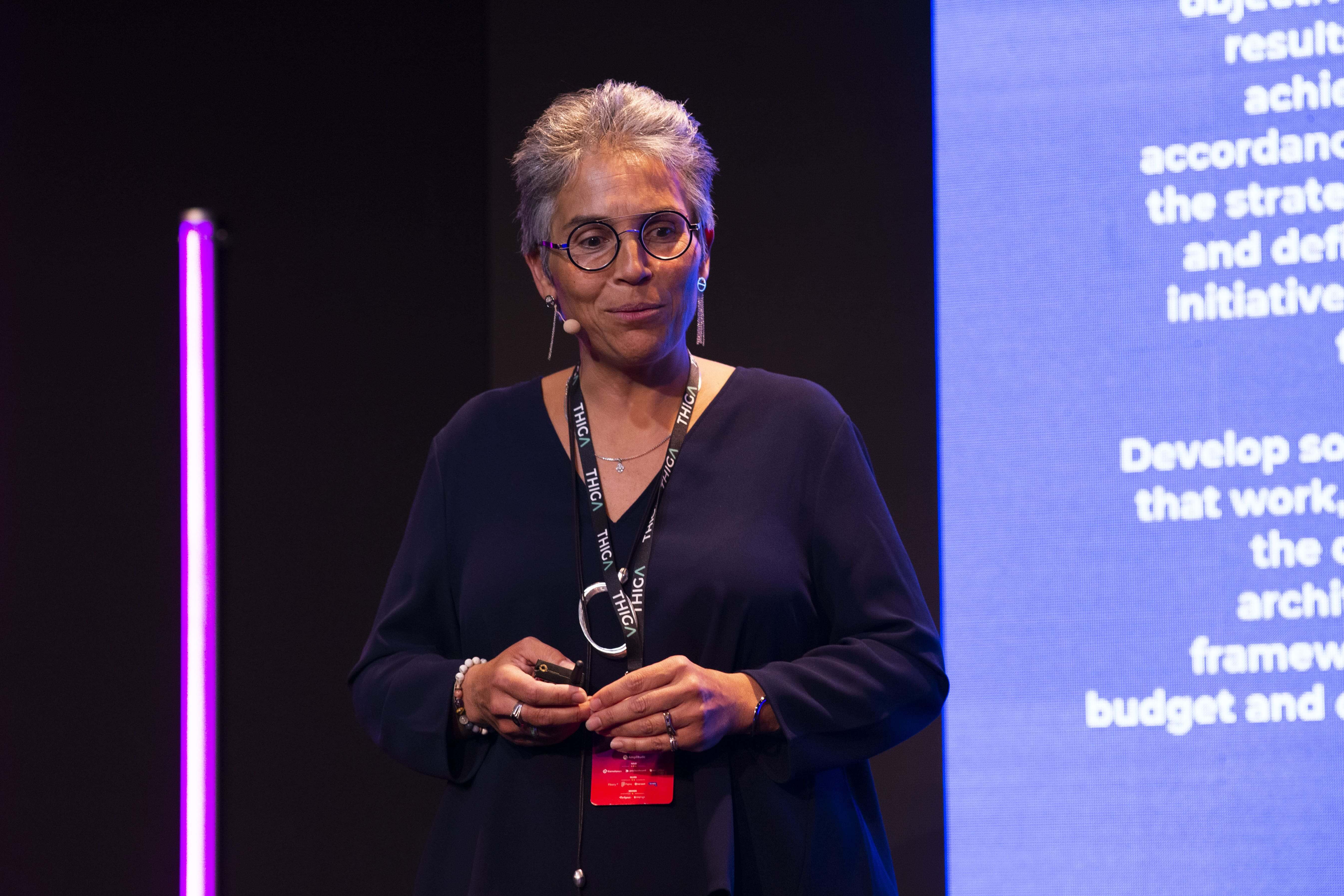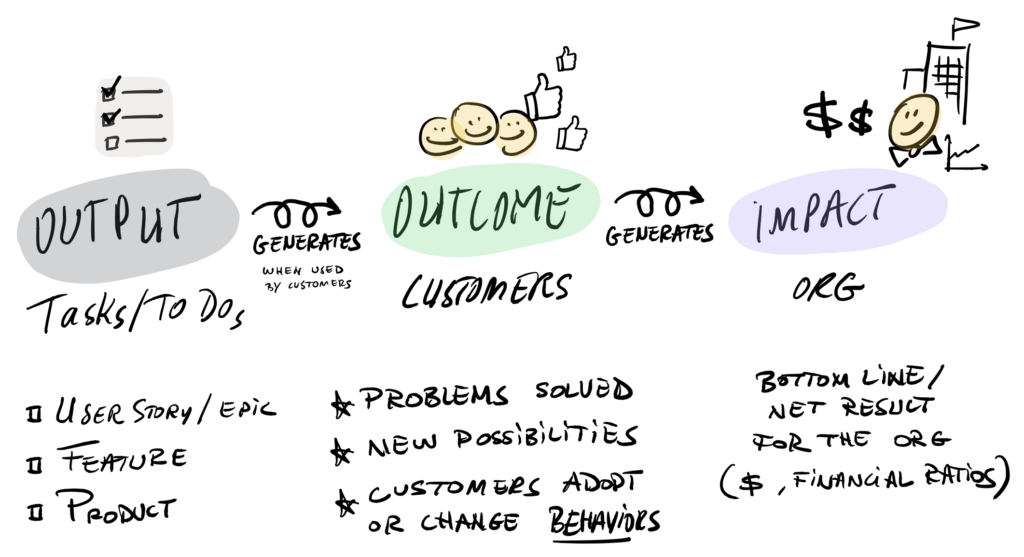Constant Hameau, a consulting manager at Thiga, has supported the E-commerce and Operational Marketing Management teams of Carrefour France in a major mission: the implementation of the OKR (Objectives and Key Results) method. He shares with us his insights gained from experience.
"We aim to transform Carrefour from a traditional retailer with e-commerce capabilities into a Digital Retail Company that puts digital and data at the heart of all its operations and its value creation model".
In November 2021, Alexandre Bompard, Chairman and CEO of Carrefour, outlined the key points of his ambitious digital strategy for 2026.
To fully contribute to this objective, the Directions -E-commerce and Marketing- have been undergoing a transformation towards a Product organization model that integrates the 4-in-the-box collaborative model developed by Walmart, but also an overhaul of its discovery/delivery practices, and a model for focus and strategic alignment... The OKRs!
This latest project is the subject of my mission when I join the E-commerce and Marketing France Digital Factory teams in September 2022, under the guidance of Valérie Legat and with Louis Jumaux as the main sponsor in charge of the operational deployment of the Product organization. The goal set? To have operational OKRs from the first quarter of 2023. A significant challenge! Especially since this entity works with both the E-commerce Direction, which includes home delivery and Drive, and the Operational Marketing Direction France. It is strategic within the group and involves several hundred internal stakeholders...
The transformation plan for the Digital Factory had identified the need to focus more on the major levers addressing the challenges of E-commerce while ensuring stakeholder alignment on these strategic choices. And the OKRs were an obvious solution. Having become a standard in Silicon Valley since it was popularized by Google in the 2000s, this model has since been extensively tested in the digital field.
My mission, with the support of Valérie and Louis, is thus to deploy them on a large scale in 4 months, to the Digital Factory and its direct stakeholders. I’m going to tell you here how we went about it.
Sponsorship from Leadership, team training, and setting broad strategic objectives
First step: introducing the OKR model to the Leadership of the E-commerce and Marketing Directions with Mourad Bensadik (E-commerce Director) and Frédéric Preslot (Operational Marketing Director France). The aim is to communicate the value proposition of OKRs for Carrefour and, more specifically, in their interactions with the Digital Factory. This is a crucial mission to gain their sponsorship and thus ensure their implementation within the teams. By definition, OKRs are a methodology for alignment, focus, and assistance with synchronization. It only makes sense if the Business Leadership sees the value: more alignment and focus of the 4-in-a-box teams (Business, Product, Design, Tech) on high-impact topics.
Second step: Training all the 4-in-a-box teams to allow everyone to understand the value, to have a common knowledge base, and to know the next steps for their implementation.
The 9 Tribes of the organization (referred to as North Stars at Carrefour) are thus introduced to the concept over 2 hours per group, with a theoretical part supplemented by practical cases and a workshop part for application.
Alongside these trainings that I give almost every day, work must be done on the broad strategic objectives, so that teams can subsequently start to establish their own OKRs related to them and thus define their roadmap.
To facilitate this first exercise, we identified with the E-commerce and Marketing France Directors the 4 strategic objectives, starting from the strategy to define objectives that respect the best practices of the OKR methodology (inspiring sentences, non-numeric, providing a target to reach and a vision for the future).
The Key Results will be defined with the CoDirs E-commerce and Marketing. To ensure that everyone has the same level of quantitative and qualitative information, an analysis and data collection effort is undertaken beforehand (e.g. P&L analysis, main reasons for churn or NPS improvement opportunities)
The CoDir usually meets every two weeks. Louis and I join one of their meetings to organize a two-hour workshop. The goal is to define Key Results that will achieve the pre-set objectives.
After brainstorming on Miro, the KRs are prioritized by a voting system. Subsequently, a significant amount of work is done with the Chief of Staff of the Chief E-commerce, Digital Transformation, and Data Officer to consolidate the figures and link them to the business rationale of the company. In other words, what is the impact of these KRs on profitability and revenue but also their part in the BP (budget forecasts)!
Outcome: 4 strategic objectives are set, with 2 to 5 KRs associated.
Communication of CoDir's OKRs to teams and defining the 9 "North Stars"
A first progress report takes place 45 days after my arrival. At this point:
- All teams have been trained
- The strategic OKRs of the E-commerce direction have been created
With these two intermediate goals achieved, it’s now time to communicate these strategic OKRs for 2023 to the teams.
This happens during a monthly plenary meeting with all the digital teams, organized in the vast amphitheater of the Massy-Palaiseau headquarters. Over 30 minutes, these strategic OKRs are shared by the E-commerce France Directors and Operational Marketing France, followed by a question-and-answer session. To facilitate understanding, teams receive a Starter Pack including the context behind each objective and data to justify the choice of KRs. A considerable amount of work, accomplished in a few days by Louis and the teams of the Chief E-commerce, Digital Transformation, and Data Officer.
We are now ready for phase 2: workshops with the 9 teams to create their roadmap in the form of OKRs.
To achieve this, we proceed in two steps:
- Objective definition workshop
After reiterating the annual strategic objectives and to be sure that everyone is on the same wavelength, we again ask them via a Miro board, on which KRs they think they can have an impact. Then, through branching and brainstorming, we define with them objectives that can respond to these. These are validated after a vote.
Note that Carrefour operates with the 4 in the box principle: at all levels of the company, 4 representatives from each function come together: Product, Tech, Design, and Business. Ideally, the person responsible for each central area consolidates the wishes and ideas of their team and speaks on their behalf during meetings. In practice, there are sometimes more business representatives in the workshops, which, in retrospect, is a mistake. Indeed, it can cause dispersion, each advocating for their interests and creating biases during votes.
- Key Results definition workshop
In a second workshop, we work with the teams on the KRs. In other words: for each of the validated objectives, what are the means of measuring success?
Again, the methodology is straightforward: each idea pops up on a sticky note. These are then grouped into major categories, and a vote officially validates them. This exercise is more complicated than it seems because some teams may lack the certainty and conviction on potentially achievable data. It must be said that Carrefour had just come out of a transformation phase into Product mode: the organization was thus quite new with new scopes of action.
Outcome: it took almost a month of work to complete these 2 two-hour workshops for each of the 9 North Stars.
A few weeks later, a quarter planning session is carried out by the CoDir. In concrete terms, each team presents its OKRs for the first quarter and then the Leadership trims them down to achieve a coherent, prioritized, and realistic roadmap. From a hundred presented KRs, only about thirty remain in the end. It’s now time to officially deploy them! After a period of discussion and refinement with Louis, Valérie, the CPO, the OKRs are final. In early December 2022, a fair is organized: each team finally presents the roadmap of its initiatives for the first quarter to the entire e-commerce department, responding to the determined OKRs. And now, this roadmap evolves from quarter to quarter depending on the results achieved.
The conclusion of my experience? Above all, I have realized the enthusiasm around the OKR method, extending beyond the E-commerce department of Carrefour and even if allowing teams to autonomously create their OKRs seemed unsettling because it was new to some. But this immediately helped to bring the tech, design, product, and business sectors closer together. Seeing these different sectors, previously organized in silos, think together about common solutions, define initiatives, and be aligned on a roadmap is a success in itself. It is obviously too early to assess the outcome of this transition but already, an increase in team velocity is observed. Proof that things are moving in the right direction!
My main takeaways:
- Have high-level sponsorship! Implementing the method requires strong availability of the teams at the start and at least quarterly governance from the top management.
- Start from the top. Set annual strategic OKRs at the company scale or at least over an extended scope, this will allow teams to more easily build their quarterly roadmaps.
- Start small. Identify a team to experiment with quarterly OKRs, then assess the results (criteria for identification: team members' appetite for the method, ease of access to data, direct link with the annual strategy of the company).
- Ensure you have enough user and market data. This way, you can measure the attainment of objectives (KRs) more precisely.
- Simplify the approach. Be pragmatic and don't be too purist. The first OKR exercises aim to onboard teams, to create collaboration and a first level of focus.



